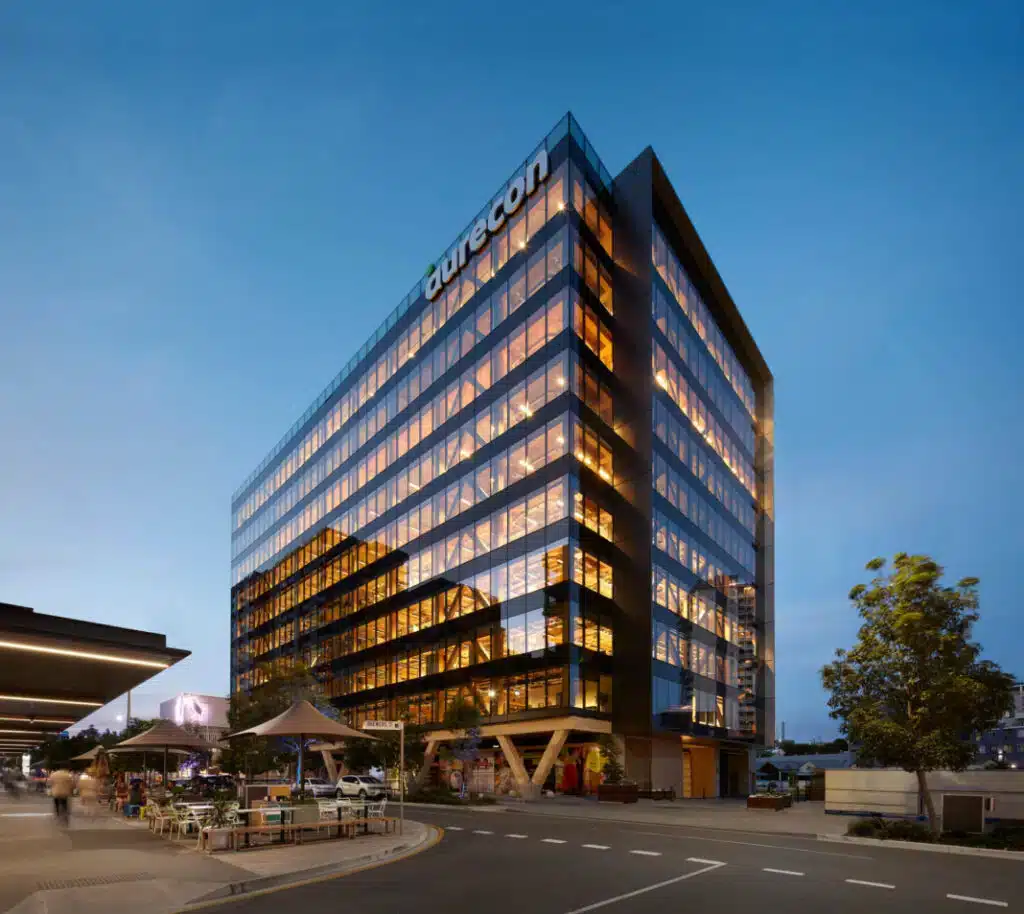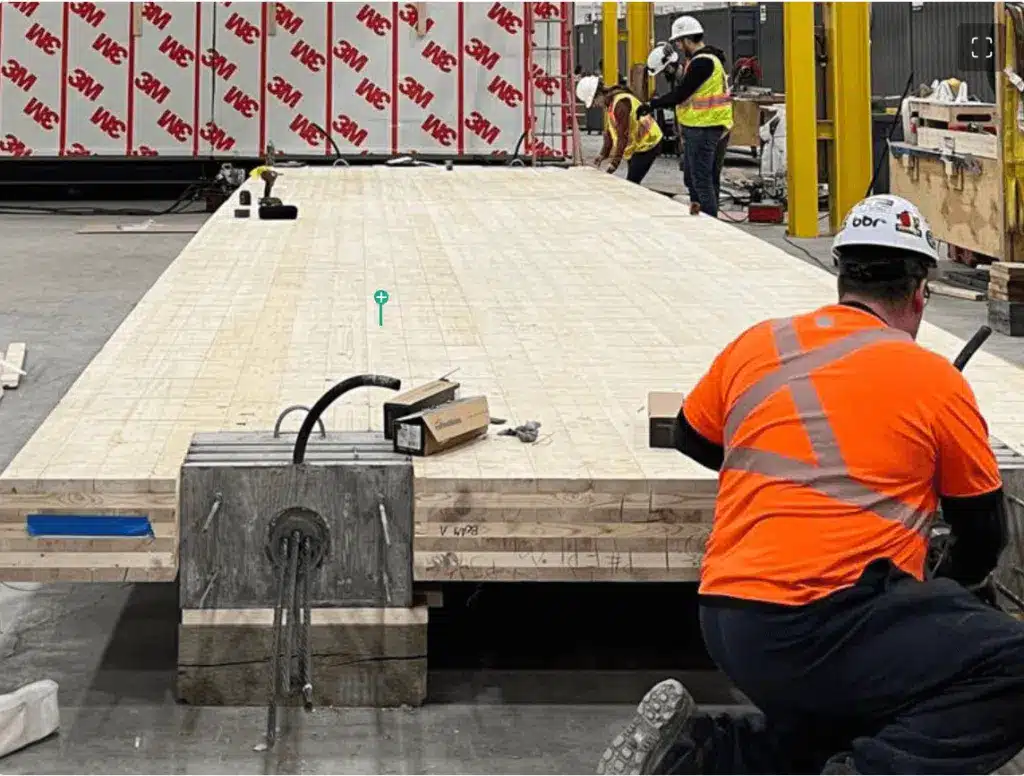‘Embodied carbon’ is on the radar of every developer and landlord as the world looks to replace carbon-heavy steel and concrete with timber.
The stakes could not be higher, with more than 50 million square metres of real estate under construction between now and 2030.
That is according to Green Building Council of Australia CEO Davina Rooney, who spoke to the Australian Financial Review about the push to grow timber buildings.
Australia has emerged as a global leader in the push to decarbonise, with Ms Rooney pointing to a surge in timber-rich buildings registered for 4-star, 5-star and 6-star projects.
Ms Rooney, who participated in a panel organised by the Wood Central Publisher last year, is a long-time supporter of timber-led construction.
Between 2011 and 2018, just five timber buildings were registered for Green Star, including 25 King Street, which doubled with six more in 2019 and 2020 and again with 16 in 2021, 2022 and 2023.
“Of all the timber buildings buildings registered with the Green Building Council over history, we’ve done more than 50% in the last three years alone,” Ms Rooney said.
The pivot towards timber is part of a shifting focus from operational carbon to reducing emissions connected to the construction process.
“Developers know the pathway to net-zero in operations,” Ms Rooney said, which includes taking gas out of buildings, securing renewable electricity and better use of ventilation.

Could the government regulate improved embodied carbon performance?
Last month, the UN published a blueprint urging developers to build less, use more sustainable materials and ‘clean up” traditional materials to meet climate commitments.
According to Ms Rooney, the GBCA reached a critical milestone this year: “5 Star crossing the threshold where buildings will use more energy from the building than they will use operationally over the length of their lifecycle.”

Data from Arup showed that buildings emit between 600 kg and 1000 kg of CO2 per square metre over a 60-year life cycle, “with roughly half from embodied carbon and half from operational carbon.”
That has led the government to consider regulations to improve embodied carbon in buildings.
Earlier this month, the NSW Government became the first jurisdiction in Australia and one of the first in the world to specify that embodied carbon be incorporated in design projects.
The requirements are part of the new Sustainable Buildings State Environment Policy.
While the new policy is a step in the right direction, Wood Central understands that further clarification still needs to be provided for architects and designers looking to comply with the new policy.
“The policy is a step in the right direction, but architects and building designers need prescribed direction to reduce or remove embodied carbon from buildings,” a consultant told the Wood Central Publisher.
Is the answer Hybrid?
Increasingly, developers are looking to hybrid construction “to get the best of both worlds.”
In July, Bill McKay, a senior Lecturer at the School of Architecture and Planning at the University of Auckland, said that timber, concrete (and steel) should be used harmoniously in construction projects.
According to Brett Mason, CEO of Built, the head contractor of the Atlyassan development, “Timber is as much on the table for building where it makes sense.”
“We’re looking at many projects incorporating timber as part of a structural solution but incorporating green steel or green concrete and timber.”
Globally, engineers combine timber, concrete and steel to create cost-effective building materials to address building code requirements.

In Canada, engineers have patented a new Hybrid Timber Floor System that marries cross-laminated timber with steel and concrete and can potentially used in projects up to 105 stories!
Timber is not the single solution to decarbonise construction.
Lend Lease, which has built more than 26 mass timber buildings worldwide, points out that 70% of the building’s embodied carbon is connected to steel, concrete and facades used in foundations and facades.
“We can’t expect timber to solve all the built environment’s decarbonisation challenges single-handedly,” according to Ann Austin, Lend Lease Head of Sustainability.
But it is a start, and according to the Australian Government’s Clean Energy Finance Cooperation, ‘mid-rise construction” is the sweet spot for timber buildings.
The Clean Energy Finance Corporation (CEFC) aims to encourage the take-up of timber construction materials to absorb carbon and reduce the emissions of new buildings.
In late 2022, it announced a $70 million investment in the T3 Collingwood project, which earlier this month achieved practical completion.
Will the Build-to-Rent market drive new timber buildings?
Earlier this month, Wood Central reported that Japanese giant Sumitomo is looking to mass timber construction systems to drive build-to-rent housing stock across Asia, Europe and Australia.

Using its Atlassian know-how, Mr Mason said Built is now working with the Liverpool City Council in Sydney’s West to use mass timber to push into the build-to-rent market.
It comes as Malaysian developer UEM Sunrise is partnering with Australian-based Greystar Real Estate Partners to develop 3000 units in inner city Melbourne.
“We see the potential for a substantial demand for BTR projects as people seek out more alternative housing options in addition to BTS projects,” according to UEM Sunrise CEO Sufian Abdullah.
Upskilling Engineers and Architects to use Mass Timber Systems
The greatest challenge to mass timber adoption is to train engineers and architects to use construction systems effectively.
According to Adam Jones, co-founder of CLT Toolbox, an education software platform launched yesterday, Australia has a significant shortfall in structural engineers who can sign off on the material.
“In Australia, we have about 10,000 structural engineers and only 30 of them are timber specialists,” Mr Jones said earlier this month.
Mr Jones, who, with Ringo Thomas, is behind the Melbourne start-up CLT Toolbox, has signed partnership agreements with all major Australian mass timber suppliers, Monash University, and the ARC Advance Timber Hub – administered by the University of Queensland.
They also have the backing of Bluescope, which headlined a consortium of investors earlier this month supporting the software that removes ‘bottlenecks’ and helps engineers design buildings using mass timber construction systems.






